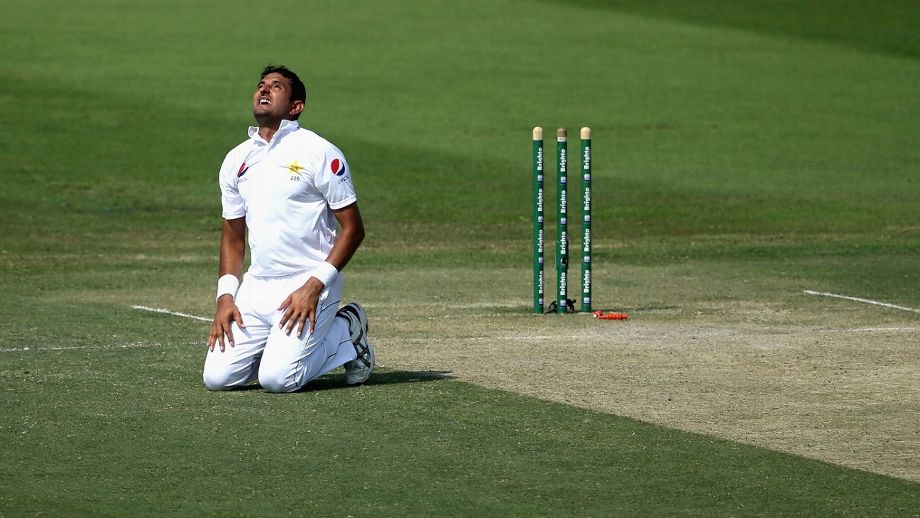Style over substance - Pakistan caught in a tangle
There is a group of Pakistani fans, some of them have gone on to work as bloggers and media professionals, formed a group called “Pace is Pace yaar”. Their major work involved ranting about Pakistan cricket and celebrating Pakistani “Jazba” like no other, with an added sense of humour.

In the truest sense, Pakistan cricket is an equivocal set of geniuses, often adding to the narrative by sending the most generous of ones and at times, letting you facepalm thanks to the impeccable disappointing power they possess. The world might make fun of them - for being slow on the field or refusing to move away from the archaic cricketing mentality - but who can argue against their logic? They are, in simple words, cricket’s ultimate contrarians - sometimes, adding to the flavour of the season, and other times, failing drastically but doing it with a flavour that is Kaafi unique.
All things considered from Pakistan’s point of view, it was hard to argue against their decision to leave out Mohammed Abbas or picking the young trio of Shaheen Afridi, Imran Khan, and Naseem Shah for a Test at the Gabba - a venue that evokes memories of some glorious pace bowling. It was pure cricketing logic that a pacer with the ability to generate bounce should get the first go, and Pakistan did exactly that. But seldom has cricket operated in theories and Pakistan understood in the hard way as Australia handed them an ignominious defeat in Brisbane. Only that Abbas was smiling from the sidelines with an average of 18.83 in Test cricket, carrying drinks like a pro.
Does this bring a question, a Pakistani one at that - which is more important? Style or Substance - the ability to pounce on the opposition when things are on the onward direction or just channelising the inner ‘Jazba’ to bowl with full ferocity yet strangely vulnerable in uncomfortable situations? Whatever it was, it didn’t yield a lot of results for Pakistan in Brisbane and if the processes that are set in motion are anything to go by, there is little chance that the result will be anything different in Adelaide too.
As I started with the toupe of “Pace is Pace yaar”, I will again go back to the idea to seek validation for my open challenge to the current Pakistan team management, as you might consider it as blasphemy too. The rhythmic run-up of a pace bowler and delivery was hypnotising - and for sure, Afridi and Naseem gave me some solid moments to savour - but in a country, where if you fail to march on when you are ahead is the end of hope, Pakistan dead batted their dreams.
Sure enough, Abbas had a stinker of a series in South Africa, conceding runs at 46.20 but that was about it. With a sub-20 average in England, Ireland, West Indies, and UAE, Abbas had made himself the kind of bowler that Mohammed Asif was. He is accurate and his seam-ups are as dangerous as Asif’s skilful swing was. But Pakistan, in fact, the new Pakistan under Misbah Ul Haq, sacrificed him for a 32-year-old pace bowler who hadn't played a Test for three years. Even taking the first-class structure to account, Imran is no competition to Abbas, with the latter having a tally of 203 wickets at 19 in 45 games to Imran’s 59 wickets at 29 in 19 games. You know the difference, don’t you?
Ever since the spot-fixing scandal that broke out in 2010, a total of 22 players have represented Pakistan, making them one of the highest among any other Test teams but it is anybody’s guess how big a failure that has been for the Asian country. The domestic cricketing structure, which has recently gone on a complete overhaul with the commencement of 2019 Quaid-e-Azam Trophy, kept on producing pace bowlers but the translation has been so horrendous that people have almost forgotten the likes of Mohammad Talha, Bilawal Bhatti, Ehsan Adil, and Tanvir Ahmed. The reason has always been being overly assertive about new talents and then letting them go to waste after a couple of failures. Talents have rarely found an atmosphere to succeed.
It is particularly sad because fast-bowling is a state of mind for Pakistanis and rides the waves of momentum. From the time of Fazal Mahmood to Mohammad Abbas, it is a relentless way to exert pressure through bounce, crafty swing and masterful reverse swing. That spunk had made Pakistani pace bowling what it was, and sadly, that spunk has gone for a vacation once Shoiab Akhtar and Mohammed Asif left the stage.
Before the story becomes history, Pakistan have been blessed with an opportunity to do exactly what Mohammad Irfan, Rahat Ali, Sohail Khan and Wahab Riaz were expected to do in the aftermath of Amir, Asif, Junaid and Gul losing out to oblivion. It is a story that never got fulfilled but it is the time, Pakistan corrects their wrongs.
Forget the pace-bowling 'jazba', it is the time the “Junoon” should take over. The Junoon of not losing the belief until the last man physically left the stadium. Abbas has come with that spunk, showed the audacity to pick wickets and celebrate hard. He has shown the ability to pick wickets when the chips are down. Pakistan can ill afford to see it fall apart. In the realisation of this lies Misbah's biggest contribution to this fragile unit.

Comments
Sign up or log in to your account to leave comments and reactions
0 Comments